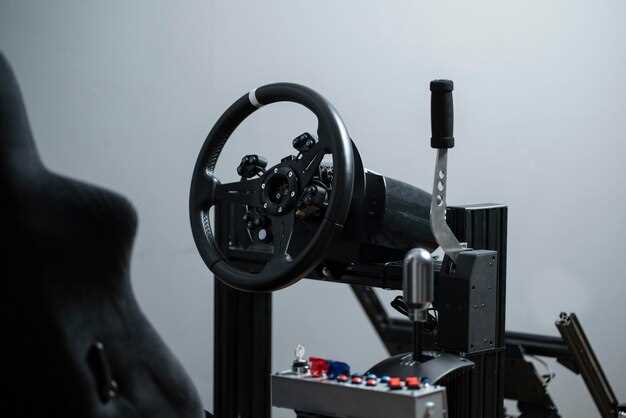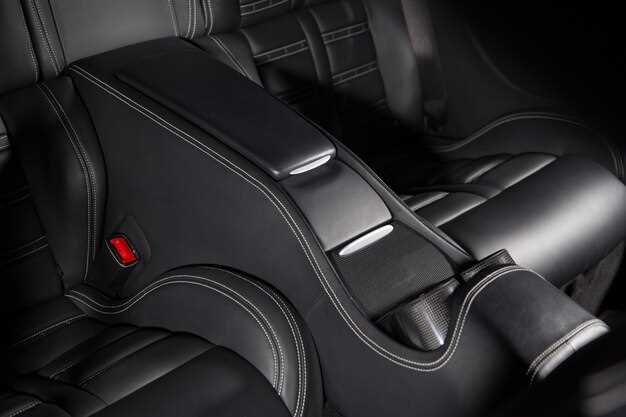
Upgrading your vehicle’s interior with aftermarket racing seats can significantly enhance your driving experience. These seats are designed not only for comfort but also for improved support during high-performance driving. The installation process may seem daunting, but with the right tools and guidance, you can achieve a professional-looking result in your own garage.
Before diving into the installation process, it’s essential to consider the type of racing seats that best fit your vehicle and driving style. Racing seats come in various shapes and sizes, each offering unique advantages. Ensure that the seats you choose are compatible with your car’s existing seat rails or be prepared to invest in custom mounts that facilitate a proper fit.
Once you have selected the right seats, understanding the step-by-step installation process will make the task much easier. This guide will provide you with detailed instructions, tips, and safety considerations to ensure that your new racing seats not only look great but also perform optimally on the track.
Choosing the Right Racing Seat for Your Car
Selecting the appropriate racing seat is crucial for enhancing both performance and comfort during driving. Start by considering the specific type of racing you intend to participate in, as different events may have unique requirements. For instance, track racing typically demands a seat that offers superior lateral support due to sharp turns, while drag racing might prioritize lightweight construction.
Next, assess the compatibility of the seat with your vehicle. Measuring the available space is essential to ensure a proper fit. Take into account the seat width, height, and depth; you want a product that complements your car’s interior while meeting safety standards.
Material choice also plays a significant role in your decision. Many racing seats utilize fiberglass, carbon fiber, or other composite materials for durability and weight savings. Ensure the selected material aligns with your performance goals and offers adequate cushioning for longer races.
Additionally, research the seat’s installation process. Different models might have varying mounting requirements; it’s vital to choose a seat that you can install safely and securely to your car’s frame. Using a reliable mounting bracket designed for your vehicle is critical for optimal performance and safety.
Lastly, always prioritize safety features. Look for seats equipped with harness slots and fire-retardant materials, as these features can significantly enhance protection during races. Investing time in selecting the right racing seat ensures not just improved performance but also a safer driving experience on the track.
Necessary Tools and Equipment for Installation

To successfully install aftermarket racing seats, it is important to gather the right tools and equipment. Proper preparation ensures a smooth process and enhances the overall safety and performance of the seats.
Firstly, you will need a set of hand tools. A ratchet and socket set is essential for removing and securing bolts. Make sure to have various sizes, especially a 10mm and 14mm socket, as these are commonly used in seat mounting. A torque wrench is also crucial to ensure that all bolts are tightened to the manufacturer’s specifications, providing added safety during use.
Additionally, a set of wrenches will come in handy, particularly if any of the mounting hardware is hard to reach. A flathead and Phillips screwdriver will be necessary for removing any paneling or trim that might obstruct access to the seat installation area.
For those planning to install custom seat brackets, a drill with metal drill bits may be required. Ensure you have bolts, nuts, and washers that are compatible with your seats and vehicle to ensure a secure fit. If your vehicle does not pre-drill mounting holes for the seats, consider buying a tap and die set to create the necessary threads.
Lastly, safety is paramount during installation. Use safety glasses to protect your eyes from metal shavings and dust. A work light will assist in illuminating dark spots within the vehicle cabin, ensuring that you have a clear view of your workspace.
Step-by-Step Process for Removing Stock Seats
Removing stock seats is a crucial part of installing aftermarket racing seats. Follow these steps to ensure a successful removal process:
| Step | Description |
|---|---|
| 1 | Gather Necessary Tools: Prepare tools required for the job, including a socket wrench, screwdriver, and gears for safety. |
| 2 | Safety First: Disconnect the battery to prevent any electrical issues, especially if the seats have airbags. |
| 3 | Access the Seat Bolts: Slide the seat forward to expose the bolts at the rear. Use the appropriate socket to loosen them without stripping. |
| 4 | Remove Rear Bolts: Carefully unscrew the rear bolts and set them aside safely for reinstallation or replacement. |
| 5 | Slide Seat Back: Move the seat backward to access the front bolts. Ensure you have enough space to maneuver. |
| 6 | Remove Front Bolts: Use the socket wrench to remove the front bolts. Keep them alongside the rear bolts for reference. |
| 7 | Disconnect Wiring: If your stock seats have electrical components, carefully unplug any connectors linked to the seat. |
| 8 | Lift Out the Seat: Once all bolts and wires are disconnected, carefully lift out the seat from the vehicle. Take caution not to damage surrounding areas. |
| 9 | Clean the Area: After removing the seat, clean the area to prepare for the installation of your new racing seat. |
Following these steps will help ensure an efficient removal of stock seats, paving the way for your new racing seats installation.
Installing Aftermarket Seats: Key Considerations
When considering the installation of aftermarket racing seats, several critical factors need to be taken into account to ensure safety, compatibility, and comfort.
- Compatibility with Vehicle: Before purchasing, verify that the seats are compatible with your vehicle’s make and model. Check dimensions and mounting points to ensure a proper fit.
- Weight: Racing seats are designed to be lightweight, which can improve performance. However, consider how the weight will impact the vehicle’s balance and handling.
- Safety Standards: Look for seats that meet or exceed safety regulations, such as FIA certifications. This ensures they provide adequate protection during racing.
- Mounting Brackets: Proper mounting brackets are essential for installation. Ensure they are compatible with both the seats and your vehicle for a secure fit.
- Harness Compatibility: If you plan to use a racing harness, verify that the seats have appropriate slots or anchors for secure attachment.
- Comfort and Support: Racing seats should provide sufficient lateral support. Consider your driving style and comfort preferences when selecting seats.
In summary, thorough planning and consideration of the above aspects are crucial for a successful aftermarket seat installation. Proper installation not only enhances your driving experience but also ensures your safety on the track.
Ensuring Safety Features After Installation

After the installation of aftermarket racing seats, it is crucial to verify that all safety features are functioning correctly. This ensures not only compliance with regulations but also the protection of the driver and passengers during high-speed driving. Follow the steps below to confirm the effectiveness of the safety features.
-
Check Seatbelts:
- Ensure that the seatbelts are compatible with the new seats.
- Test the retraction mechanism to confirm it operates smoothly.
- Inspect for any wear or damage that might hinder performance.
-
Secure Mounting:
- Confirm that the seats are securely bolted to the vehicle’s frame.
- Use appropriate hardware and torque specifications for installation.
- Regularly check mounting points for any signs of loosening over time.
-
Compatibility with Airbags:
- Understand how the installation of aftermarket seats affects airbag systems.
- If necessary, consult with professionals to ensure airbags deploy correctly.
- Consider using seats that are designed to work with existing airbag systems.
-
Adjustments and Testing:
- Make sure all seat adjustments (reclining, height) function properly.
- Conduct test drives to assess the stability and comfort of the installed seats.
- Evaluate the seating position for optimal visibility and control.
By meticulously following these steps, you can ensure that your aftermarket racing seats provide the necessary safety features, enhancing both performance and security on the road or track.
Common Issues and Troubleshooting During Installation
Installing aftermarket racing seats can significantly enhance your driving experience, but it’s not without its challenges. Here are some common issues you might encounter and their troubleshooting solutions.
1. Compatibility Issues
One of the first obstacles can be ensuring that the racing seats are compatible with your vehicle. If the seat brackets do not align with your car’s mounting points, you may need to purchase universal seat brackets or fabricate custom mounts.
2. Incorrect Height or Position
After installation, the seat height or angle may feel off. Measure the distance from the floor to your seating position before installation. Adjust the slider rails or seat brackets if necessary to achieve a comfortable position. Remember that the seat should allow for proper visibility and control.
3. Seatbelt Installation Challenges
Integration of seatbelts can sometimes be problematic. Ensure that the seatbelt slot is aligned with your vehicle’s original mounting points. If the seat does not have built-in slots for harnesses, consider aftermarket harness bars or mounting options.
4. Clearance Issues
When repositioning the seats, clearance between the seat and steering wheel is crucial. If there isn’t enough space, you may need to adjust the seat’s mounting location or consider a different seat designed for more room.
5. Stability Problems
A wobbly seat can lead to distractions while driving. Make sure you fully tighten all bolts and screws during installation. If instability persists, revisit your hardware and brackets to ensure everything is correctly and securely installed.
6. Comfort Concerns
Racing seats can sometimes feel uncomfortable for long periods. If the seat is too firm or incorrectly padded, consider adding aftermarket cushions or adjusting the upholstery to your preference. It’s essential that a racing seat offers support without compromising comfort.
Addressing these common issues can ensure a successful installation of aftermarket racing seats, ultimately enhancing your performance and enjoyment behind the wheel.
